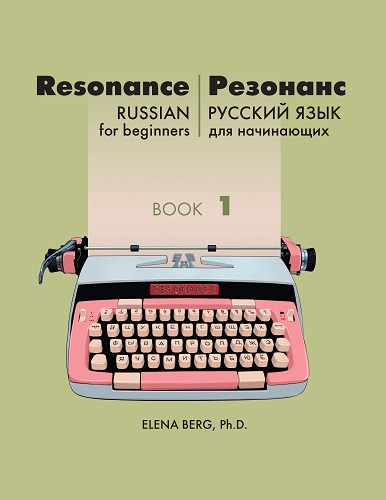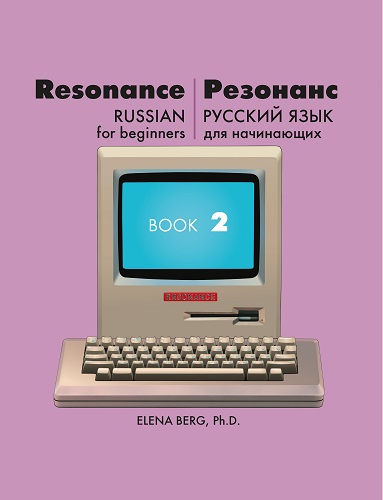Resonance Textbook
This Russian Language Study Guide provides all the necessary means for developing Russian language competence at the A1/A2+ levels. Upon completion of this course learners will gain the language skills needed to feel confident in the Russian language environment.
This knowledge will form a solid foundation for further studies of the Russian language and literature.
The Guide is composed of a textbook, guidelines for teachers and online supplements. The content is meticulously balanced between the essential components of language acquisition process: Russian grammar, vocabulary and communication skills development.
Detailed explanations of the material enable learners to study Russian on their own.
Online Supplements
The textbook and study guide is supplemented with subject-oriented dictionaries, audio records that illustrate Russian phonetics, and answers to the exercises. These aids are accessible through QR-codes that you can find in the book.
These aids help study Russian phonetics, memorize words and expressions given in the lessons and check the correctness of your work on the excersises.
The electronic dictionaries include flashcards and automatic tests that help check your vocabulary development progress.
For learners
This book gives you detailed explanation of the Russian grammar, specifics of usage of Russian words that often pose challenges for English speakers, and useful linguistic-cultural materials.
Stress marks are shown in each Russian word in the book. Exercises are given in the end of each lesson; it is recommended to complete these exercises as you work through the lesson following the references printed in light grey color, e.g. Упражнение 124. The book includes Russian-English dictionary.
The online supplement complements the book by providing assistance with Russian phonetics, vocabulary acquisition and exercise answers checking.
For teachers
This textbook consists of 2 volumes and an online supplement.
The first book contains 18 lessons, and the second contains 16. Depending on a student's skill level and the number of exercises assigned, the time needed to complete a lesson may range from 3 to 6 hours. Some lessons may require additional time due to the complexity of the topics covered. Each lesson includes English explanations of linguistic material, examples, a text illustrating the lesson's grammar and vocabulary, and exercises. Additionally, many lessons feature linguistic-cultural comments.
The metodology guidelines are explicitly provided in the Preface for Teachers section of Book 1. Besides, the flow of information across the lessons and the structure of each lesson offer implicit guidelines on how to run the study process while allowing flexibility to accomodate the specific needs of individual students.

